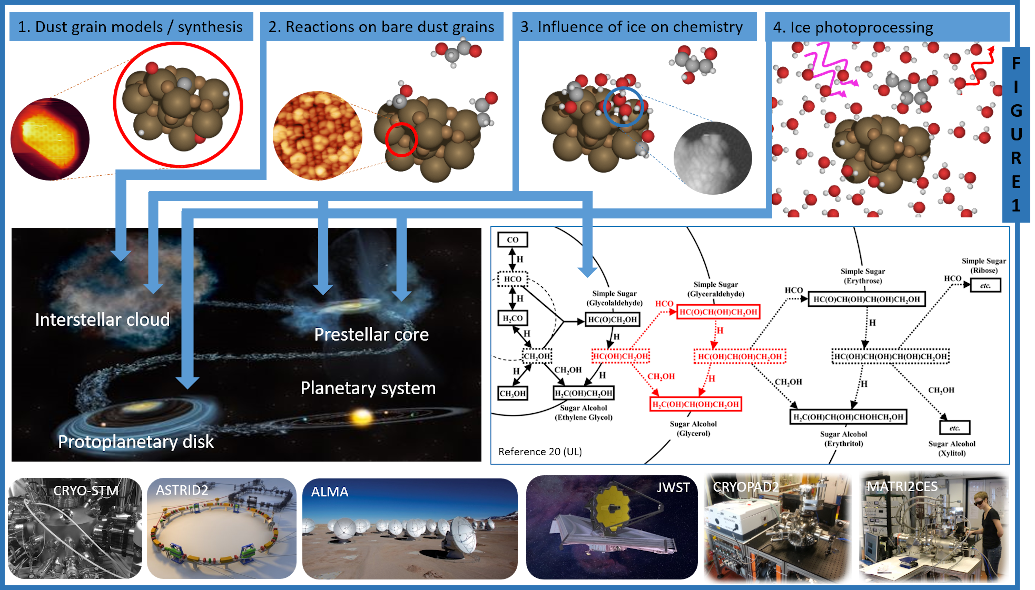"The Center for Interstellar Catalysis aims to discover the origin of the molecular building blocks of life, in space"
Interstellar space is a playground for surprisingly complex chemistry - more than 200 different molecules have been detected so far, including biologically relevant molecules, such as the simple sugar glycolaldehyde. On comet 67P/Churyumov–Gerasimenko the simplest amino acid glycine was recently detected and throughout the history of our planet, comets and meteorites have routinely delivered such prebiotic molecules from outer space to Earth. Here, they may have acted as seeds for the development of life. Understanding the origin of this interstellar chemical complexity and the possible formation of the molecular building blocks of life in space have been outstanding challenges for decades.
"The governing hypothesis is that interstellar nanoscale dust grains act as catalysts for the formation of complex molecules from the very dilute atomic and molecular gas in interstellar space."
The aim of InterCat is to test this hypothesis and to uncover the degree of molecular complexity attainable via interstellar surface reactions. We will determine whether the production of the molecular building blocks of life, e.g., sugars, amino acids, fats and DNA bases, predates the formation of stars and planets, and occurs at the extremely low temperatures and pressures found in interstellar space. InterCat will thus determine the molecular starting conditions for the origin of life across the universe
To achieve this goal we will use the full toolbox of heterogeneous nano-catalysis to identify key catalytic and photo-catalytic reactions on and in carbonaceous, silicate and ice-covered nanoparticles representing realistic analogues of interstellar dust grains. We will follow the build-up of complex, biologically relevant molecules, step-by-step, via atom addition, radical addition or molecular reactions under interstellar conditions and directly link these findings to astronomical observations.
Under InterCat we bring together research teams within surface science, nanoscience, heterogeneous catalysis and experimental and observational astrochemistry. These groups will bring their full inventory of cutting-edge experimental, observational and theoretical facilities and techniques to bear on this outstanding problem: Machine learning and evolutionary algorithms, the ASTRID2 synchrotron source and the scanning probe microscopy (SPM) and low temperature astrochemistry machine-parks at Aarhus University (AU) and University of Leiden (UL), as well as direct involvement in running and upcoming observational facilities such as the Atacama Large Millimeter Array (ALMA) and James Webb Space Telescope (JWST).
InterCat research will take place within the framework of four themes. Initial efforts will focus on identifying low temperature solid state pathways for 4 key reactions: Caproic Acid (CH3(CH2)4COOH, fatty acid), Cytosine (C4H5N3O, DNA base), Glycine (NH2CH2COOH, amino acid) and Ribose (C5H10O5, sugar) formation. In the figure below, suggested formation pathways for Ribose formation are displayed.
Under InterCat we will explore such pathways and investigate the actual reaction routes. This encompasses: The computational and experimental formation of interstellar dust grain analogues (Theme 1); the catalytic properties of such grains in the ice (sub)monolayer regime, typical for diffuse and translucent clouds (Theme 2) and on icy grains (sub-monolayer to a few tens of layers) typical for dense clouds (Theme 3), and in proto-planetary disks, when radiation fields increase in the collapsing envelopes (Theme 4).
